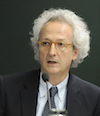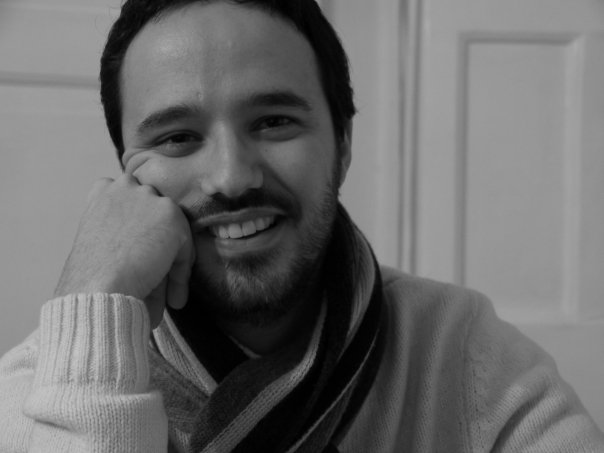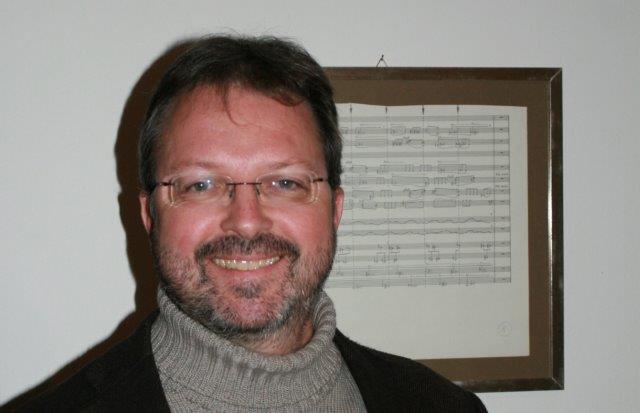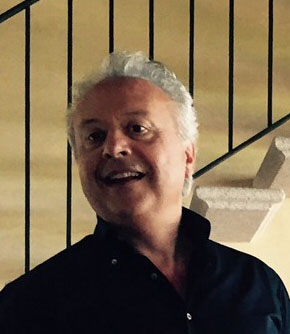Studying at the University of Verona
Here you can find information on the organisational aspects of the Programme, lecture timetables, learning activities and useful contact details for your time at the University, from enrolment to graduation.
Academic calendar
The academic calendar shows the deadlines and scheduled events that are relevant to students, teaching and technical-administrative staff of the University. Public holidays and University closures are also indicated. The academic year normally begins on 1 October each year and ends on 30 September of the following year.
Course calendar
The Academic Calendar sets out the degree programme lecture and exam timetables, as well as the relevant university closure dates..
| Period | From | To |
|---|---|---|
| Sem. 1A | Sep 24, 2018 | Nov 10, 2018 |
| Sem. 1B | Nov 19, 2018 | Jan 12, 2019 |
| Sem. 2A | Feb 18, 2019 | Mar 30, 2019 |
| Sem. 2B | Apr 8, 2019 | Jun 1, 2019 |
| Session | From | To |
|---|---|---|
| Sessione d'esame invernale | Jan 14, 2019 | Feb 16, 2019 |
| Sessione d'esame estiva (gli esami sono sospesi durante la sessione di laurea) | Jun 3, 2019 | Jul 27, 2019 |
| Sessione d'esame autunnale | Aug 26, 2019 | Sep 21, 2019 |
| Session | From | To |
|---|---|---|
| Sessione di laurea estiva | Jul 8, 2019 | Jul 13, 2019 |
| Sessione di laurea autunnale | Nov 4, 2019 | Nov 9, 2019 |
| Sessione di laurea invernale | Mar 30, 2020 | Apr 4, 2020 |
| Period | From | To |
|---|---|---|
| Festa di Ognissanti | Nov 1, 2018 | Nov 1, 2018 |
| Sospensione dell'attività didattica | Nov 2, 2018 | Nov 3, 2018 |
| Festa dell’Immacolata | Dec 8, 2018 | Dec 8, 2018 |
| Vacanze di Natale | Dec 24, 2018 | Jan 5, 2019 |
| Vacanze di Pasqua | Apr 19, 2019 | Apr 23, 2019 |
| Sospensione attività didattica | Apr 24, 2019 | Apr 27, 2019 |
| Festa della liberazione | Apr 25, 2019 | Apr 25, 2019 |
| Festa del lavoro | May 1, 2019 | May 1, 2019 |
| Festa del Santo Patrono | May 21, 2019 | May 21, 2019 |
| Festa della Repubblica | Jun 2, 2019 | Jun 2, 2019 |
| Vacanze Estive | Aug 12, 2019 | Aug 17, 2019 |
Exam calendar
Exam dates and rounds are managed by the relevant Culture and Civilisation Teaching and Student Services Unit.
To view all the exam sessions available, please use the Exam dashboard on ESSE3.
If you forgot your login details or have problems logging in, please contact the relevant IT HelpDesk, or check the login details recovery web page.
Should you have any doubts or questions, please check the Enrollment FAQs
Academic staff
 augusto.barbi@univr.it
augusto.barbi@univr.it

Bassetti Massimiliano
 massimiliano.bassetti@univr.it
massimiliano.bassetti@univr.it
 045802 8376
045802 8376
 andrea.chiurato@univr.it
andrea.chiurato@univr.it
Hatzikiriakos Alexandros Maria
 alexandrosmaria.hatzikiriakos@univr.it
alexandrosmaria.hatzikiriakos@univr.it
 dino.piovan@univr.it
dino.piovan@univr.it
 alberto.scandola@univr.it
alberto.scandola@univr.it
Tani Stefano
 stefano.tani@univr.it
stefano.tani@univr.it
 +39 045802 8110
+39 045802 8110
 luciamaddalena.tissi@univr.it
luciamaddalena.tissi@univr.it
 carlo.vannini@accademiabelleartiverona.it
carlo.vannini@accademiabelleartiverona.it
 gianmaria.varanini@univr.it
gianmaria.varanini@univr.it
Study Plan
The Study Plan includes all modules, teaching and learning activities that each student will need to undertake during their time at the University.
Please select your Study Plan based on your enrollment year.
1° Year
| Modules | Credits | TAF | SSD |
|---|
1 module to be chosen among the following2 modules to be chosen among the following1 module to be chosen among the following2° Year activated in the A.Y. 2019/2020
| Modules | Credits | TAF | SSD |
|---|
2 modules to be chosen among the following1 module to be chosen among the following1 module to be chosen among the following| Modules | Credits | TAF | SSD |
|---|
1 module to be chosen among the following2 modules to be chosen among the following1 module to be chosen among the following| Modules | Credits | TAF | SSD |
|---|
2 modules to be chosen among the following1 module to be chosen among the following1 module to be chosen among the following| Modules | Credits | TAF | SSD |
|---|
Legend | Type of training activity (TTA)
TAF (Type of Educational Activity) All courses and activities are classified into different types of educational activities, indicated by a letter.
Comparative Grammar of Classical Languages (M) (2019/2020)
Teaching code
4S02273
Teacher
Coordinator
Credits
6
Language
Italian
Scientific Disciplinary Sector (SSD)
L-LIN/01 - HISTORICAL AND GENERAL LINGUISTICS
Period
Sem 2A dal Feb 17, 2020 al Mar 28, 2020.
Learning outcomes
The course of Comparative Grammar of Classical Languages gives an introduction in the comparative study of the Ancient Indo-European languages, based on the reconstructive method, in order to describe selected grammatical categories of the Protolanguage (Proto-Indo-European). The structural aspects of the development and change of some grammatical categories, described in a diachronic perspective, especially of those belonging to the nominal and verbal morphology, are particularly referring to Old Greek and Latin, Sanskrit and the German languages. The phenomena will be presented through the reading and discussion of selected texts in order to show their reconstruction for the protolanguage and of some pragmatic or syntactic features in the texts. The texts will be chosen among the oldest documents of some Indo-European languages such as Mycenaean Greek, Old Latin, Vedic, Gothic, Hittite and Lithuanian.
Expected results
Adequate knowledge of the history and methods of the traditional studies in Comparative Indo-European linguistics.- Adequate knowledge of the morphological inventory for nominal and verbal derivation - The ability to understand and apply the comparative method on the base of the attested languages. – The ability to recognize forms and morphemes, phrases and categories in the Ancient languages and to compare them. The skill to use the right concepts and a correct scientific terminology when discussing issues of (proto-)language reconstruction, language change, language comparison.
PREREQUISITES
The basic knowledge provided by the course of Introduction in the study of the Indo-European languages.
Program
The course of Comparative Grammar of the Indo-European Languages describes the history and the comparison of the grammatical categories of the ancient Indo-European languages in the perspective of their reconstruction for the protolanguage. The description of some grammatical categories will be done through reading and discussing some passages of selected IE languages such as Mycenaean Greek, Old Latin, Vedic, Gothic, Hittite and Lithuanian.
In particular some texts of rituals, hymns, laws, spells will be presented.
The texts will be provided by the teacher during the course.
Beekes, Robert S.P., 1995, Beekes, Comparative Indo-European linguistics: an introduction, Amsterdam
Clackson, James, 2007, Indo-European Linguistics. An Introduction, Cambridge.
Fortson, Benjamin W., 2004, Indo-European language and culture. An introduction, Malden, MA
Lehmann, W.P., 1999, La linguistica indoeuropea, (trad. italiana) Mulino, Bologna
Examination Methods
Due to the Coronavirus pandemic, and in accordance with the University of Verona guidelines, during the 2020 summer session the assessment modality will be modified as follows: online oral exam.
Oral exam and presentation of a paper during the class.
At the end of the course the student will acquire an adequate knowledge of the history and methods of the traditional studies in Comparative Indo-European linguistics, in particular:
- Adequate knowledge of the morphological inventory for nominal and verbal derivation
- The ability to understand and apply the comparative method on the base of the attested languages. – The ability to recognize forms and morphemes, phrases and categories in the Ancient languages and to compare them.
-The skill to use the right concepts and a correct scientific terminology when discussing issues of the reconstruction of the (proto-)language, language change, language comparison.
- to translate and linguistically comment the texts analyzed together.
Type D and Type F activities
| years | Modules | TAF | Teacher |
|---|---|---|---|
| 1° 2° | The origins of Christianity | F |
Augusto Barbi
(Coordinator)
|
| years | Modules | TAF | Teacher |
|---|---|---|---|
| 1° 2° | Laboratory of ancient greek | F |
Dino Piovan
(Coordinator)
|
| 1° 2° | Latin Laboratory | F |
Evita Calabrese
(Coordinator)
|
| 1° 2° | Books and writings of the Greek world | F |
Paolo Scattolin
(Coordinator)
|
| years | Modules | TAF | Teacher |
|---|---|---|---|
| 1° 2° | The origins of Christianity | F |
Augusto Barbi
(Coordinator)
|
| years | Modules | TAF | Teacher |
|---|---|---|---|
| 1° 2° | Laboratory of ancient greek | F |
Dino Piovan
(Coordinator)
|
| 1° 2° | Latin Laboratory | F |
Evita Calabrese
(Coordinator)
|
| 1° 2° | Books and writings of the Greek world | F |
Paolo Scattolin
(Coordinator)
|
| years | Modules | TAF | Teacher | |
|---|---|---|---|---|
| 1° | Humanistic informatics laboratory (m) | F |
Stefano Minozzi
(Coordinator)
|
|
| 2° | International Conference: Plautus between Text and Stage. | F |
Renata Raccanelli
(Coordinator)
|
|
| 2° | Digital edition of Torquato Tasso's Gerusalemme liberata | F |
Corrado Viola
(Coordinator)
|
|
| 1° 2° | Laboratory of photo | F |
Marco Ambrosi
(Coordinator)
|
|
| 1° 2° | Laboratory of ancient greek | F |
Dino Piovan
(Coordinator)
|
|
| 1° 2° | Latin Laboratory | F |
Evita Calabrese
(Coordinator)
|
|
| 1° 2° | Opera Workshop | F |
Nicola Pasqualicchio
(Coordinator)
|
|
| 1° 2° | SFIDE - Europe | F |
Gherardo Ugolini
(Coordinator)
|
|
| years | Modules | TAF | Teacher | |
|---|---|---|---|---|
| 1° | Humanistic informatics laboratory (m) | F |
Stefano Minozzi
(Coordinator)
|
|
| 2° | Digital edition of Torquato Tasso's Gerusalemme liberata | F |
Corrado Viola
(Coordinator)
|
|
| 1° 2° | Laboratory of ancient greek | F |
Dino Piovan
(Coordinator)
|
|
| 1° 2° | Latin Laboratory | F |
Evita Calabrese
(Coordinator)
|
|
| 1° 2° | Opera Workshop | F |
Nicola Pasqualicchio
(Coordinator)
|
|
| 1° 2° | Stranalandia. Dalla narrazione al teatro | F |
Nicola Pasqualicchio
(Coordinator)
|
|
Career prospects
Module/Programme news
News for students
There you will find information, resources and services useful during your time at the University (Student’s exam record, your study plan on ESSE3, Distance Learning courses, university email account, office forms, administrative procedures, etc.). You can log into MyUnivr with your GIA login details: only in this way will you be able to receive notification of all the notices from your teachers and your secretariat via email and soon also via the Univr app.
Graduation
List of theses and work experience proposals
| theses proposals | Research area |
|---|---|
| tesi di Glottologia, Storia comparata, Linguistica storica | ENGLISH LANGUAGE - Grammar and Syntax – Grammatik und Syntax |
| tesi di Glottologia, Storia comparata, Linguistica storica | GERMANIC LANGUAGE - Dialectology - Dialektologie |
| tesi di Glottologia, Storia comparata, Linguistica storica | HUMANITIES & SOCIAL STUDIES - HUMANITIES & SOCIAL STUDIES |
| tesi di Glottologia, Storia comparata, Linguistica storica | Indo-European languages & literatures - Indo-European languages & literatures |
| tesi di Glottologia, Storia comparata, Linguistica storica | LINGUISTICS - LINGUISTICS |
Gestione carriere
Linguistic training CLA
Double Degree
The University of Verona, through a network of agreements with foreign universities, offers international courses that enable students to gain a Double/Joint degree at the time of graduation. Indeed, students enrolled in a Double/Joint degree programme will be able to obtain both the degree of the University of Verona and the degree issued by the Partner University abroad - where they are expected to attend part of the programme -, in the time it normally takes to gain a common Master’s degree. The institutions concerned shall ensure that both degrees are recognised in the two countries.
Places on these programmes are limited, and admissions and any applicable grants are subject to applicants being selected in a specific Call for applications.
The latest Call for applications for Double/Joint Degrees at the University of Verona is available now!
Student mentoring
Requisiti classi di abilitazione insegnamento
Requisiti necessari per accedere alle classi di abilitazione per l'insegnamento.
vedi allegato pdf
Inoltre, per informazioni sui 24 CFU nelle discipline antropo-psico-pedagogiche e nelle metodologie e tecnologie didattiche, si veda -> LINK
Documents
| Title | Info File |
|---|---|
|
|
pdf, it, 307 KB, 30/11/21 |




































